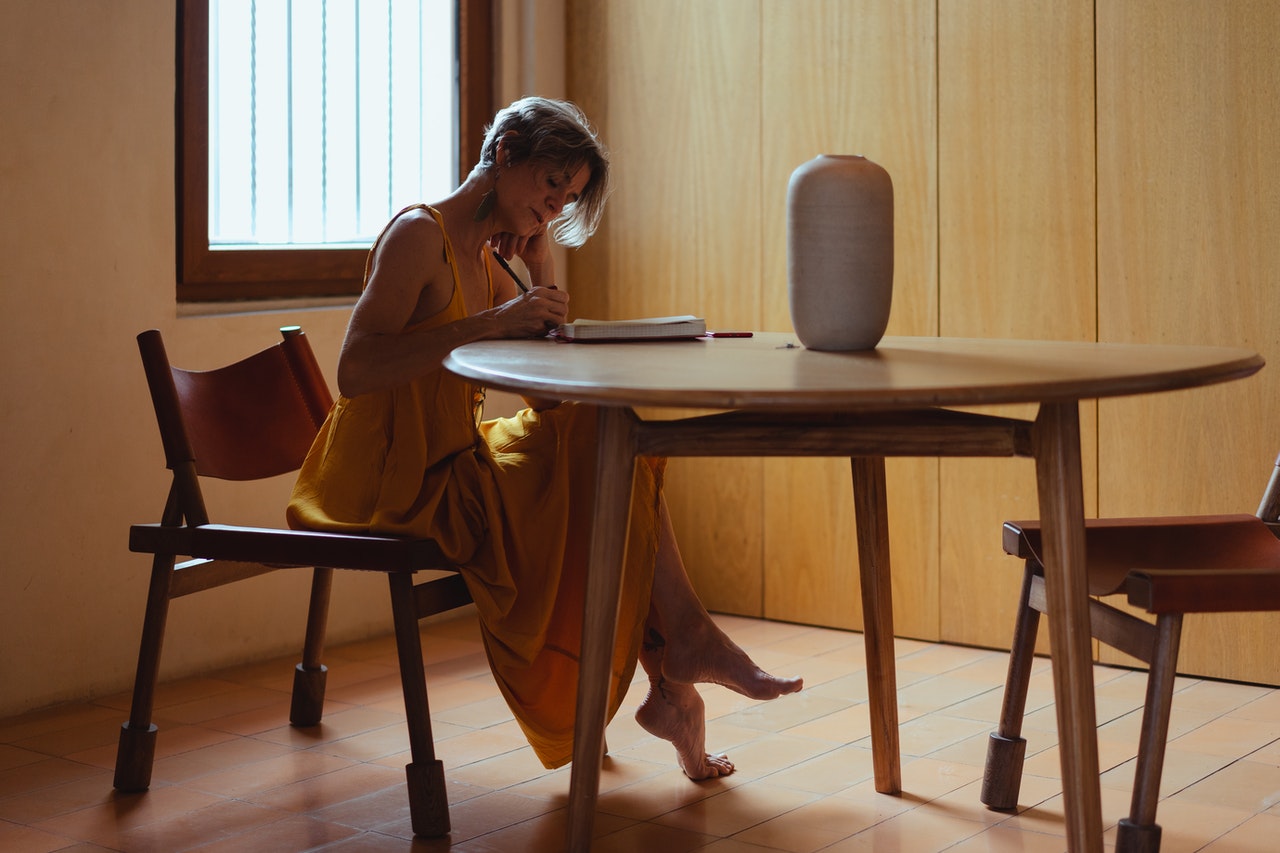The concept of creativity is one of the most misunderstood ideas and topics in the world. Most of our minds jump to artists, painters, interior design, and really messy work spaces with bags of Doritos scattered across the floor and paint all over the walls. We think about da Vinci and Mozart. We think that it’s a specific gifting that only a select few have.
If that’s your thinking, I’d invite you to open your mind to a bigger view of creativity.
And of what it has to offer you.
Creativity isn’t reserved for artists. It isn’t about spontaneity and insomnia. And it’s certainly not reserved for a select few.
In fact, IBM’s 2010 global CEO study states that creativity is one of the most crucial factors for future success.
So what is it?
How Is Creativity Defined?
There are many different schools of thought when it comes to creativity. The concept of creativity crosses all kinds of boundaries, intersecting psychology and philosophy, business and economics, technology and sociology.
Here are is one of the most commonly accepted definitions of creativity: the ability to transcend traditional constraints to create new and meaningful ideas, products, and methods.
Creativity is a skill (it can be learned).
Creativity is about solving problems (it’s useful).
Creativity involves outside-the-box thinking (it’s non-traditional).
Some questions you might be thinking:
Is Creativity Intelligence?
Much thought has gone into how creativity and intelligence are linked, and there are numerous models and theories that seek to answer this question.
Some would say a level of intelligence is necessary for creativity.
Others would argue a high level of intelligence might interfere with creative thinking.
I’m personally a fan of the threshold theory: that some level of intelligence is necessary for creative thinking. The concepts are intertwined and in a sense fuel each other.
Is Creativity Innovation?
Similarly, there is no doubt a relationship between creativity and innovation. Both involve novel ideas, both seem to require a certain ability, and both typically lead to progress.
Most thinkers land on the differentiator being the idea of implementation. Innovation is more concerned with the carrying out of an idea than the origination of it.
However, others would argue that creativity also has to do with an idea being put into use or action.
(You’re starting to see why it’s a difficult concept to define, yeah?)
Big C and Little C
A professor named James Kaufman came up with a model called The 4 C’s that I’ve found very helpful in visualizing the breadth of creativity.
Is it art? Is it about brand new ideas? Is it about taking existing ideas and making them better? Yes to all of it.
James Kaufman breaks creativity down in a way that answers for a number of different theories and models.
We won’t dive into all 4 C’s, but two I’ve found particularly helpful in conceptualizing the idea are Big C and Little C.
Little C refers to everyday problem solving and creative expression. Think: combining random ingredients for a tasty last minute meal or coming up with a new and faster way to do the laundry.
Big C refers to greatness or breakthrough within a given field. Think: skillful and creative greatness in the world of art, business, or engineering.
In other words, creativity’s breadth covers a good everyday idea, a great work of art, and a breakthrough invention that changes the world.
The Creative Process
The Creative Process is another model that helps us think about creativity. The creative process traces its origins back to a book called The Art of Thought written by Graham Wallas.
He reminds us that creativity isn’t often about random thought, but about forming relationships between existing ideas and concepts in order to solve problems.
He theorized a five-step process to crafting brilliant ideas and solutions:
- Preparation: this stage is about learning, gathering material, and research
- Incubation: forming relationships between ideas and letting your thoughts marinate
- Intimation: stepping away from the problem temporarily
- Illumination: diving back into the problem, hopefully with fresh insight, and often a solution
- Verification: getting feedback, shaping and refining your solution
Can Creativity Be Learned?
A huge stigma around creativity is that it’s a gift one is born with. It is reserved for the lucky ones who have it in their genes. But as we’ve already discussed, creativity is not a gift, but a skill.
It’s a skill fueled by a process of rituals, routines, and habits. It grows over time.
“Creativity is a habit. And the best creativity is merely a result of good habits.” – Twyla Tharp
Sure, some people are gifted in areas that lend themselves to creative thinking. Creative work may come easier to the naturally curious, or to the open-minded. But it’s not merely a gift, reserved for a small percentage of the world. It’s available to anyone with a brain.
In 1960, a man by the name of George Land created a test that would assess the creativity of children between the ages of three and five. Mr. Land gave the same students the same test at the ages of 10 and 15. During this study, he also tested somewhere around 280,000 adults.
- Test results amongst 5 year olds: 98%
- Test results amongst 10 year olds: 30%
- Test results amongst 15 year olds: 12%
- Same test given to 280,000 adults: 2%
George Land concluded it’s actually non-creative thinking that we learn over time.
Creativity is a skill that can be learned; it is a process to be managed. When managed well, it produces brilliant ideas at a moment’s notice.
“Every child is an artist. The problem is staying an artist when you grow up.” – Pablo Picasso
Wherever you are in your creative journey, don’t buy into these myths. If you don’t feel particularly gifted, there is hope. You can be more creative than you are now in 5 years. What you need to be weary of isn’t your inability to grow in creativity, but the risk of losing whatever creative thinking you have if you neglect it.
The Benefits of Creativity
A topic not often discussed when it comes to creativity is its importance.
- Great inventions revolutionized the world many times.
- Works of arts have inspired nations.
- Brilliant novels and movies keep us entertained.
- Genius business ideas employ millions.
Without creativity our world would be a much different place. It benefits society and the economy in way few other things do.
What’s crazy is that most people in our world know the benefits of creativity – yet they aren’t pursuing their creative potential.
The Creative Disconnect
Adobe performed a study in 2016 called State of Create. They surveyed over 5,000 adults in 5 countries. The responders included both those who identified as “creatives” and those who didn’t. The study showed:
- Creativity is Valuable: 77% of respondents agreed that being creative is valuable to the economy and 82% found creativity valuable to society
- Creativity Pays: Those who identified as “creatives” are paid 17% more than “non-creatives”
- Creativity is Positive: 88% of respondents said businesses who promote creativity have happier employees
Despite all of that, the study also showed that only 44% of respondents were “living up to their creative potential.” So why the disconnect?
I think this disconnect is a result of a lack of understanding. The stereotype of a “creative” is a painter locked in a closet throwing paint at a canvas. Most people’s mind’s don’t jump the executive meeting or the corporate training session.
If your job requires you to bring something new into being, you are a creative. If you work with ideas, solve problems, or generate solutions, you are a creative. Even if you just simplify complex ideas, you are a creative. No art required.
“Creativity is more than being different. Anyone can be different. Making the complex simple, now that is creativity.” – Charles Mingus
How to Foster Creativity
Creativity is the fruit of habits, rituals, and routines. It is the result of consistency. Brilliant ideas, solutions, and designs are rarely random creative spark, but the result of flexing the same muscle daily for years on end.
And if that’s the case, then there’s hope to learn creativity. It’s a skill waiting to be grown and refined. And there are plenty of ways to grow. Here are just a few:
Manage Your Inputs
The most creative people are intentional with their stimuli. They have role models, they read great books, they take walks, they watch movies that inspire them, they listen to interesting podcasts, and they go to museums. They’re careful about what goes into their minds and souls.
So take in things that inspire you. It makes a difference.
Be Curious
One of the most important disciplines of a creative is curiosity. Become disciplined in asking questions. Become disciplined in wondering why. This is crucial to growing in creativity.
And don’t just ask why, but experiment.
We all know that Thomas Edison liked to say that he hadn’t failed before inventing the lightbulb, he “…just found 10,000 ways that won’t work.” Failure is okay, and what you learn from it may spark more creative ideas than success ever would.
Build Creative Habits
Whatever your craft, refine it. Do it repeatedly. Some of the best writers have a habit of writing 1,000 words a day. Some of the best entrepreneurs spend daily time just coming up with ideas. Some of the best musicians write thousands of songs a year (and only a handful make an album). If you’re struggling to make habits stick, consider trying to set intentions through journaling.
Creativity is like a muscle that needs to be worked regularly and consistently. How do people perform well at a moment’s notice? It’s because they’ve done it a million times. Whether they’re creating art or leading companies.
Get Creative People Around You
Everyone needs other people around them to stir them up. Regardless your craft or profession, get both like-minded and not-so-like-minded people around you.
These people plant ideas, help you pick through ideas, and hold you accountable to executing on ideas. Set up regular meetings with specific individuals who inspire you.
Join meet-ups and clubs specific to your field. I know it’s probably tempting to lock yourself in a closet and go to work for a week straight, but I wouldn’t recommend it. You can’t be creative alone!
Manage Your Time Well
One of the quickest ways to fail as a creative is to burn out. It’s one of the biggest struggles in the world today – not just for those who are creative, but for anyone who does any kind of work.
It’s okay to prioritize rest, and to slow down regularly. As much as creativity is about habits and working, it’s crucial to also create rhythms of rest and rejuvenation. This will keep your passion present and your energy levels high.
Additional Resources on Creativity
This is merely a primer. I think you could read twenty books and barely scratch the surface on creative thinking. Here are a few of my favorite resources:
Best Books on Creativity
Best Articles on Creativity
- How to Be More Creative
- 21 Creativity Definitions
- Can Creativity Be Taught?
- Creativity is the Skill of the Future
Some of My Favorite Creative Tools
- The Best Self Co. Journal: a baller journal for focus and productivity
- Streaks: a great app for keeping up with daily habits
- Moleskine Notebook: the classic for jotting down thoughts, it won’t be beat






